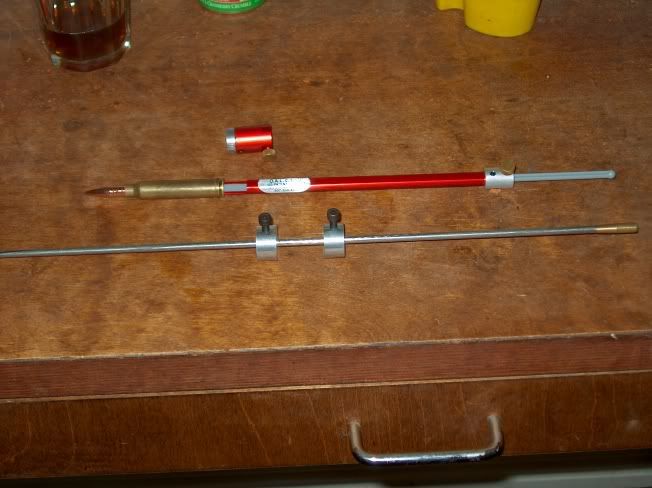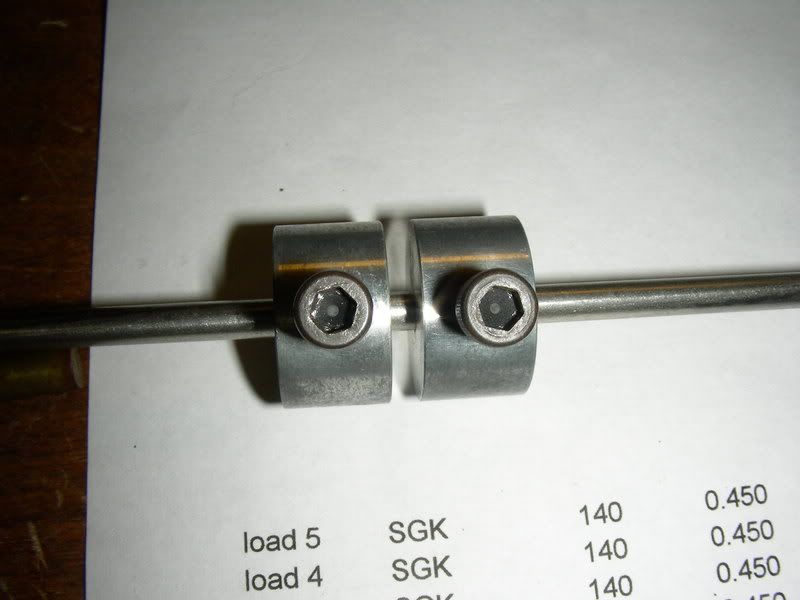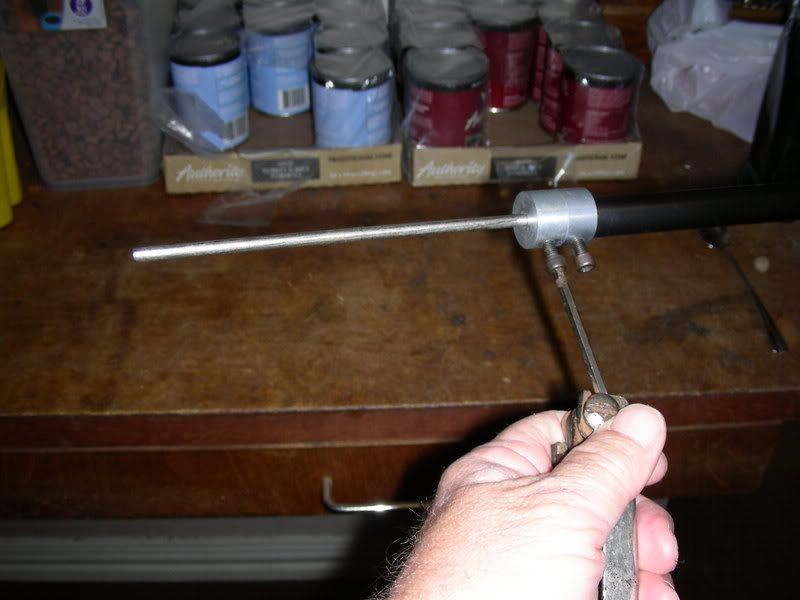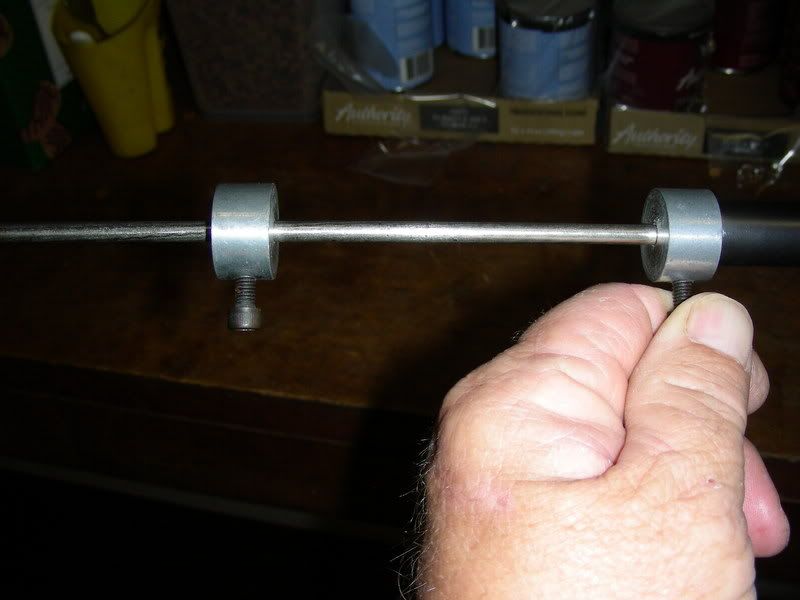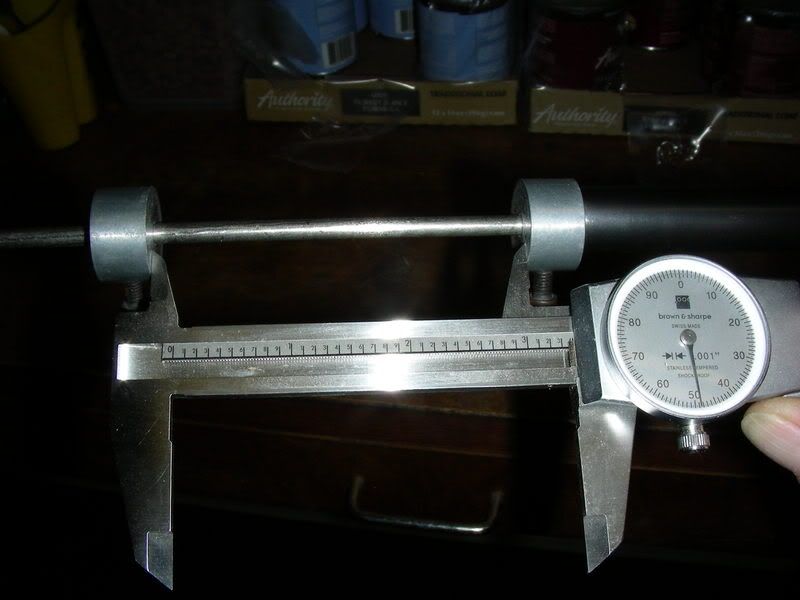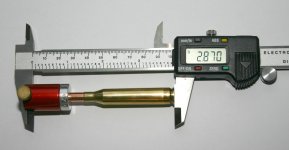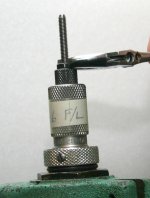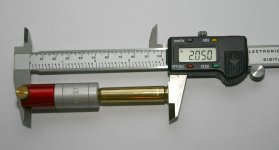M7025-06
Beginner
- Jun 28, 2014
- 222
- 0
This kind of piggybacks off of my 117 gr Sierra Pro Hunter thread from earlier today. Bare with me...this might get a little long.
I had 2 rounds that would not chamber...couldn't close the bolt. I was using 2-fired Hornady brass that was ran through my FL die, but the shoulders weren't touched. Each piece of brass chambered in the rifle prior to loading.
As for the bullet...measurement to the lands was taken with a Hornady OAL gauge. I took 3 measurements with the same bullet and came up 2.768'' (measured to the ogive). So I subtracted 0.030'' off of that to and that's what I loaded everything too (2.738'').
Jump ahead to this afternoon...I pulled the 2 rounds that wouldn't chamber and started taking measurements. The brass was 2.485'' (good) and the measurement with my Hornady headspace gauge was the same as the rest of the brass that chambered (2.642'').
So I decided to check the measurement to the lands again and about fell over when I saw the number...2.678''. That's 0.090'' into the lands. I have a hard believing a guy can close the bolt with that much of a crush into the lands without using a hammer. I tried 3 or 4 different bullets and they all read the same.
*Side note...I just took another reading and got the same as the original # (2.768''). I blackened out the neck of the OAL gauge case and it looks like it is rubbing against the chamber at the very top of the case neck. I'm wondering if this rifle has a short or tight chamber.
Can anyone give me a clue as to what's going on here? I had no signs of pressure at the range. Primers were still rounded, bolt lift was fine...nothing. I'm sure I left out some pertinent info, but this has got me baffled. Do I need to get this rifle to a gunsmith?
Any help would be appreciated.
I had 2 rounds that would not chamber...couldn't close the bolt. I was using 2-fired Hornady brass that was ran through my FL die, but the shoulders weren't touched. Each piece of brass chambered in the rifle prior to loading.
As for the bullet...measurement to the lands was taken with a Hornady OAL gauge. I took 3 measurements with the same bullet and came up 2.768'' (measured to the ogive). So I subtracted 0.030'' off of that to and that's what I loaded everything too (2.738'').
Jump ahead to this afternoon...I pulled the 2 rounds that wouldn't chamber and started taking measurements. The brass was 2.485'' (good) and the measurement with my Hornady headspace gauge was the same as the rest of the brass that chambered (2.642'').
So I decided to check the measurement to the lands again and about fell over when I saw the number...2.678''. That's 0.090'' into the lands. I have a hard believing a guy can close the bolt with that much of a crush into the lands without using a hammer. I tried 3 or 4 different bullets and they all read the same.
*Side note...I just took another reading and got the same as the original # (2.768''). I blackened out the neck of the OAL gauge case and it looks like it is rubbing against the chamber at the very top of the case neck. I'm wondering if this rifle has a short or tight chamber.
Can anyone give me a clue as to what's going on here? I had no signs of pressure at the range. Primers were still rounded, bolt lift was fine...nothing. I'm sure I left out some pertinent info, but this has got me baffled. Do I need to get this rifle to a gunsmith?
Any help would be appreciated.

